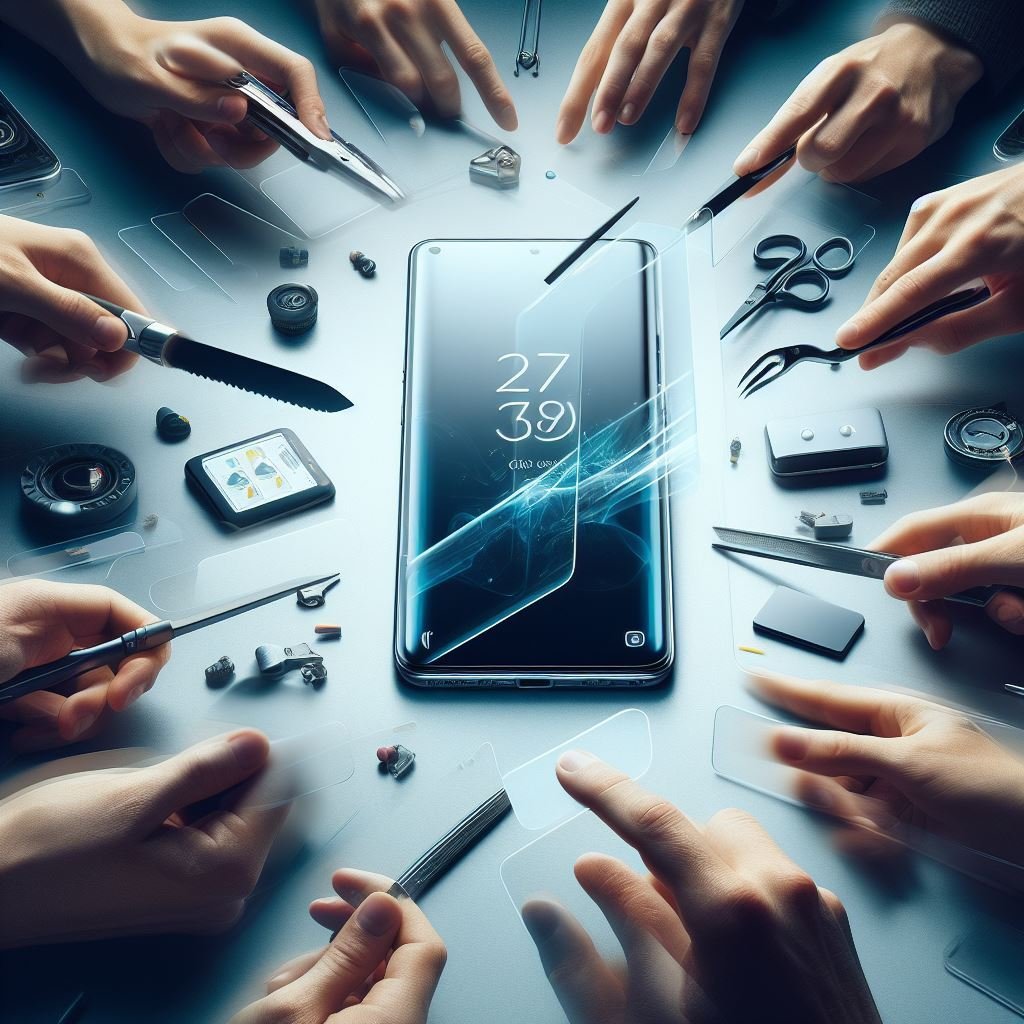Do modern phones need screen protectors?
In today’s world, smartphones are not just communication tools—they are indispensable extensions of our lives. From storing memories to being productivity powerhouses, these devices are both technologically advanced and financially valuable. With all this functionality comes a common concern: do modern phones need screen protectors?
While phone manufacturers boast about the toughness of Gorilla Glass Victus and Ceramic Shield, no material is completely immune to scratches, cracks, or everyday wear and tear. A screen protector acts as a crucial safeguard, offering protection without compromising the device’s functionality or aesthetics.

The Evolution of Smartphone Screens
Smartphone technology has advanced significantly over the past decade. Today’s devices are equipped with ultra-responsive touchscreens, vibrant AMOLED or OLED displays, and durable materials like Corning Gorilla Glass. While these features provide excellent clarity and responsiveness, they come with a trade-off:
- Vulnerability to Damage: Despite marketing claims, even the toughest screens can crack or scratch under certain conditions.
- Thinner Designs: Modern phones prioritize slimness and lightness, which often leads to reduced durability.
For instance, Ceramic Shield, popularized by Apple, offers enhanced drop protection but is still prone to scratches from abrasive materials like sand or metal.
Why Screen Protectors Are Still Relevant
1. Everyday Threats to Your Smartphone Screen
Even with the strongest materials, your phone screen faces numerous risks daily:
- Sand and Dirt: Often found in pockets or bags, these tiny particles can cause micro-scratches over time.
- Keys and Coins: These common pocket items can create deep scratches, especially on unprotected glass.
- Accidental Drops: A single drop can result in spiderweb-like cracks, significantly affecting usability and aesthetics.
2. High Replacement Costs
Modern smartphone screens are expensive to repair or replace. Depending on the model, screen replacements can cost hundreds of dollars, making a $10-$30 screen protector a wise investment.
3. Enhanced Functionality
Screen protectors now offer additional benefits beyond protection:
- Anti-Glare Coatings: Improve visibility in bright environments by reducing reflections.
- Blue Light Filters: Help reduce eye strain during prolonged usage.
- Privacy Filters: Prevent others from peeking at your screen in public spaces.
Types of Screen Protectors and Their Benefits
1. Tempered Glass Protectors
- Durability: Can withstand significant impact and pressure.
- Seamless Touch Experience: Mimics the original screen’s feel and responsiveness.
- Ease of Installation: Comes with oleophobic coatings to repel fingerprints and smudges.
2. Matte Finish Protectors
- Anti-Glare: Ideal for outdoor use.
- Smooth Touch: Reduces friction, making it comfortable for frequent typing or gaming.
3. Plastic Film Protectors
- Affordability: Budget-friendly option.
- Flexibility: Thin and lightweight, but less durable compared to glass protectors.
Built-In Screen Protectors: Are They Enough?
Some modern phones and cases come with pre-installed screen protectors. While these offer a basic level of protection, they often fall short in critical areas:
- Fit and Coverage: Built-in protectors may not cover the entire screen, leaving edges exposed.
- Durability Issues: Factory-installed protectors are usually thinner and less resistant to impact or scratches.
Pairing a high-quality tempered glass protector with your smartphone ensures comprehensive coverage and added durability.
Do Premium Phones Still Need Protection?
Flagship devices from brands like Apple, Samsung, and Google often feature cutting-edge protective technologies like:
- Gorilla Glass Victus 2: Marketed as scratch-resistant but still vulnerable to abrasive materials.
- Ceramic Shields: Offers drop protection but doesn’t prevent micro-abrasions.
Despite these advancements, users frequently report scratches, especially from sand or accidental drops. Screen protectors act as an affordable insurance policy, ensuring the device remains pristine for longer.
Debunking Common Myths About Screen Protectors
Myth 1: Screen Protectors Ruin Display Quality
High-quality tempered glass protectors are ultra-thin and transparent, preserving the clarity and vibrancy of AMOLED or OLED displays.
Myth 2: They Reduce Touch Sensitivity
Low-quality plastic protectors may cause issues, but premium glass protectors retain full touch responsiveness, ensuring smooth usage.
Myth 3: They Are Hard to Install
Modern screen protectors come with alignment tools and adhesive layers that minimize bubbles and make installation easy.
How to Choose the Right Screen Protector
When buying a screen protector, consider these factors:
- Material: Opt for tempered glass over plastic for better durability.
- Compatibility: Ensure it’s designed for your specific phone model to avoid alignment issues.
- Features: Look for additional benefits like anti-glare, privacy filters, or blue light reduction.
- Brand Reputation: Trusted brands offer higher-quality products with fewer defects.
FAQs About Screen Protectors
Yes, regardless of the phone model, a screen protector provides added security against accidental damage, extending the device’s lifespan.
While a case protects the phone’s back and edges, it doesn’t safeguard the screen. Combining a case with a screen protector offers the best defense.
Factory-installed protectors are often thin and may lack durability. Adding a tempered glass protector ensures superior protection.
Conclusion: Better Safe Than Sorry
In the age of modern smartphones, where design and functionality go hand in hand, protecting your device’s screen is non-negotiable. With risks ranging from scratches to costly replacements, a screen protector is a small yet significant investment that ensures peace of mind.
Whether you choose tempered glass for durability, matte finishes for anti-glare properties, or privacy filters for added discretion, the right screen protector can enhance your smartphone experience without compromising its sleek design. Protect your phone today—your future self will thank you!


6 thoughts on “Do modern phones need screen protectors?”
Pingback: What are the advantages and disadvantages of screen protectors? - Screen Guardian
Pingback: Which Tempered Glass is Best For Mobile? - Screen Guardian
Pingback: How to Apply Screen Guard - Screen Guardian
Pingback: Five Types of Screen Guards All Should Know About! - Screen Guardian
Pingback: Gorilla Screen Protector - Shield for Your Smartphone | Screen Guardian
Pingback: Privacy Screen Protectors Safeguarding Your Digital Privacy - Screen Guardian